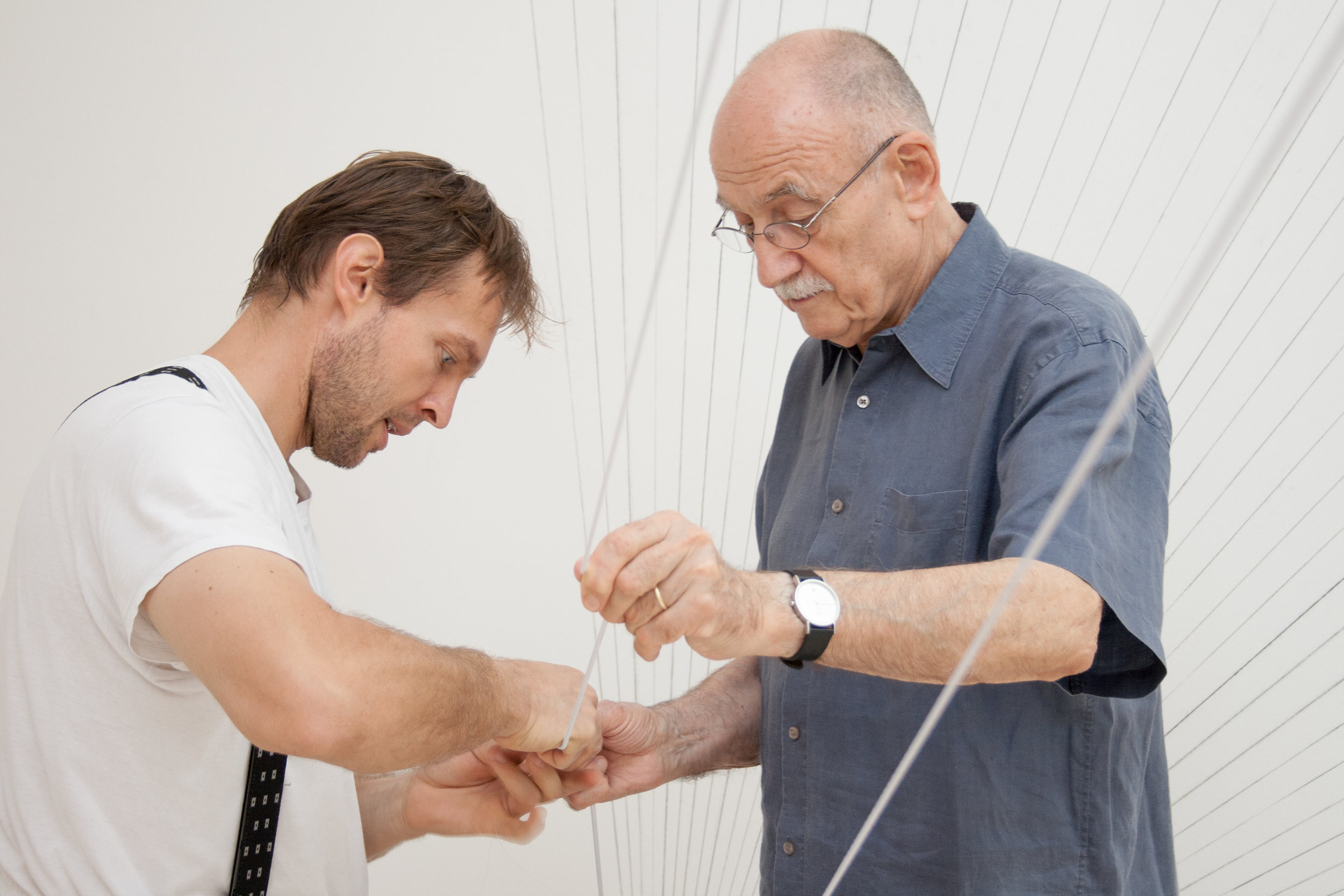Jánoš Megyik
8. October 1938
Jánoš Megyik Manfredo Massironi was an Italian artist, architect, theorist and scientist who explored connections between visual arts, free-standing objects and architecture. These interdisciplinary overlaps allowed him to create generally applicable rules and methods which he has formulated in his manifests and essays and incorporated them in his works.
In the centre of his interest is the idea of perception - its possibilities and different ways of perceiving an artwork or the surrounding world and its effect on the viewer. He worked together with respected authorities in the field of psychology and he was actively involved in experimental theory. His objects and reliefs were created based on the psychological aspects of visual perception and the influence on the viewer's subconscious.
He was a founding member of Gruppo N / 1960-65, Padova, Italy /. A group that formed a parallel to the group Zéro / 1957 Düsseldorf /. Both of these groups are characterised by their interest in light, motion, new materials, technologies and processes aimed to reduce visual means. Along with Edoardo Landim, Toni Costa, Albert Biasio and Ennio Chiggiem he explored new possibilities of creation within the rules of geometric abstraction. Manfredo Massironi graduated from the Institute of Industrial Design and the Faculty of Architecture in Venice. He took part in first exhibitions of New tendency in Zagreb / 1961 63 65 / and he was represented at the exhibition The Responsive Eye in New York / 1965 representing 99 artists from 15 countries /.
Manfredo Massironi exhibition at the Závodný Gallery is the artists’ first solo exhibition in the Czech Republic. The presented works follow the artist from early 60’s, focusing on his wire and threads constructs. Despite the rigorous observance of geometrical rules, these reliefs are very subtle and natural. Wood, paper and plexiglass objects are representing the artists’ reliefs from 90´s. From 1964 Manfredo Massironi worked on voluminous compositions made of cardboard strips. These composed reliefs are perfectly symmetrical and their combinations create interesting volute patterns. Massironis’ works from the nineties are represented by reliefs made of various materials such as wood, paper or plexiglass. These wall objects are mostly composed of several parts, the outer circumference shelters clearly defined geometrical bodies / mostly square, rectangle or triangle /.
Works from the last period almost eliminate the surface area of the picture. Only cascaded wooden "frames" are remaining. Coloured frame patterns take shape on a white background wall. Spatial drawings of geometrical structures are emerging from the white surface…






